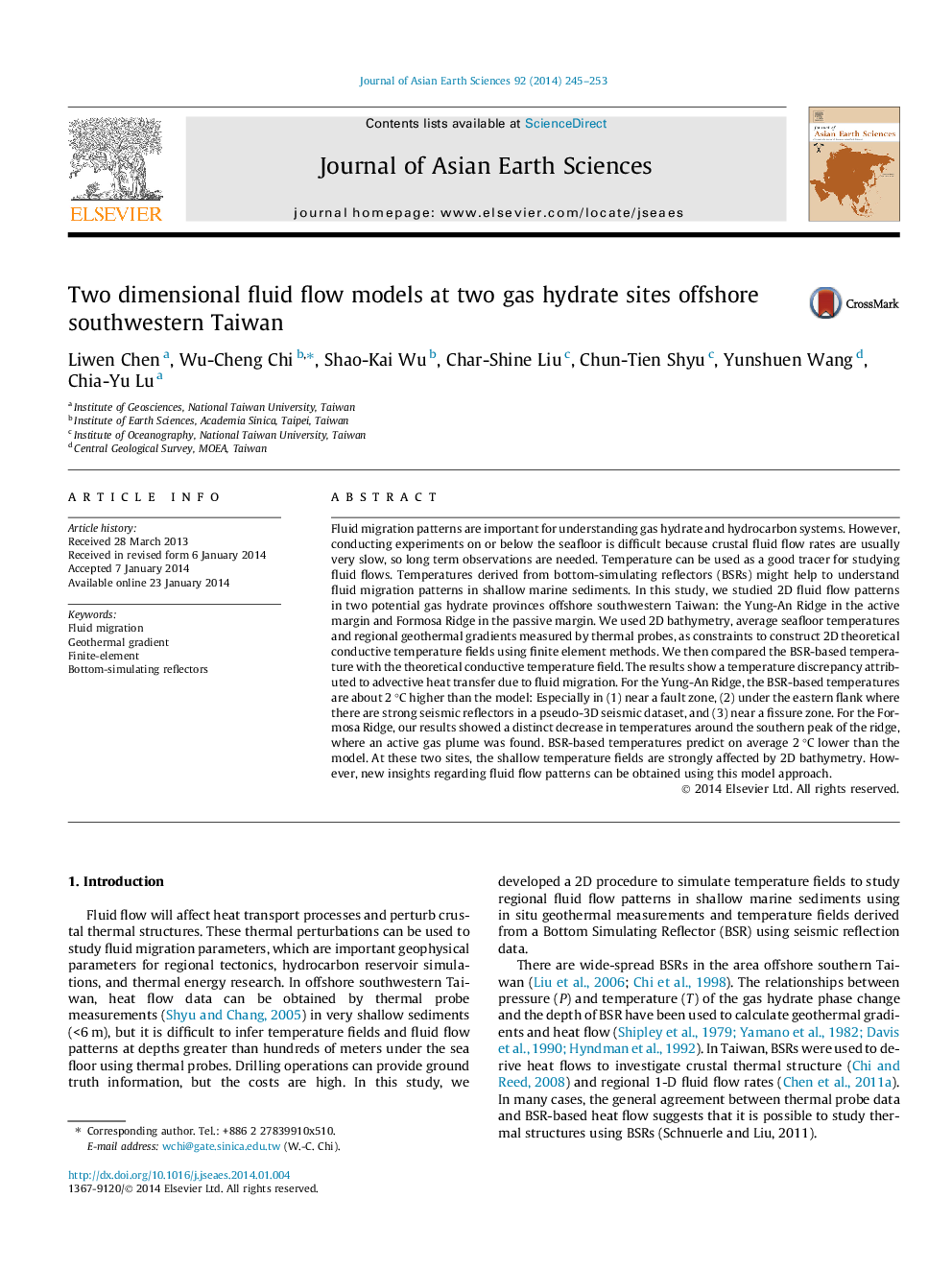| کد مقاله | کد نشریه | سال انتشار | مقاله انگلیسی | نسخه تمام متن |
|---|---|---|---|---|
| 4730533 | 1640376 | 2014 | 9 صفحه PDF | دانلود رایگان |
عنوان انگلیسی مقاله ISI
Two dimensional fluid flow models at two gas hydrate sites offshore southwestern Taiwan
ترجمه فارسی عنوان
مدل های دو بعدی جریان سیال در دو محل هیدرات گاز در ساحل جنوب غربی تایوان
دانلود مقاله + سفارش ترجمه
دانلود مقاله ISI انگلیسی
رایگان برای ایرانیان
کلمات کلیدی
مهاجرت مایع، گرادیان ژئوترمال المان محدود، بازتابنده های شبیه سازی پایین،
موضوعات مرتبط
مهندسی و علوم پایه
علوم زمین و سیارات
زمین شناسی
چکیده انگلیسی
Fluid migration patterns are important for understanding gas hydrate and hydrocarbon systems. However, conducting experiments on or below the seafloor is difficult because crustal fluid flow rates are usually very slow, so long term observations are needed. Temperature can be used as a good tracer for studying fluid flows. Temperatures derived from bottom-simulating reflectors (BSRs) might help to understand fluid migration patterns in shallow marine sediments. In this study, we studied 2D fluid flow patterns in two potential gas hydrate provinces offshore southwestern Taiwan: the Yung-An Ridge in the active margin and Formosa Ridge in the passive margin. We used 2D bathymetry, average seafloor temperatures and regional geothermal gradients measured by thermal probes, as constraints to construct 2D theoretical conductive temperature fields using finite element methods. We then compared the BSR-based temperature with the theoretical conductive temperature field. The results show a temperature discrepancy attributed to advective heat transfer due to fluid migration. For the Yung-An Ridge, the BSR-based temperatures are about 2 °C higher than the model: Especially in (1) near a fault zone, (2) under the eastern flank where there are strong seismic reflectors in a pseudo-3D seismic dataset, and (3) near a fissure zone. For the Formosa Ridge, our results showed a distinct decrease in temperatures around the southern peak of the ridge, where an active gas plume was found. BSR-based temperatures predict on average 2 °C lower than the model. At these two sites, the shallow temperature fields are strongly affected by 2D bathymetry. However, new insights regarding fluid flow patterns can be obtained using this model approach.
ناشر
Database: Elsevier - ScienceDirect (ساینس دایرکت)
Journal: Journal of Asian Earth Sciences - Volume 92, 1 October 2014, Pages 245-253
Journal: Journal of Asian Earth Sciences - Volume 92, 1 October 2014, Pages 245-253
نویسندگان
Liwen Chen, Wu-Cheng Chi, Shao-Kai Wu, Char-Shine Liu, Chun-Tien Shyu, Yunshuen Wang, Chia-Yu Lu,
